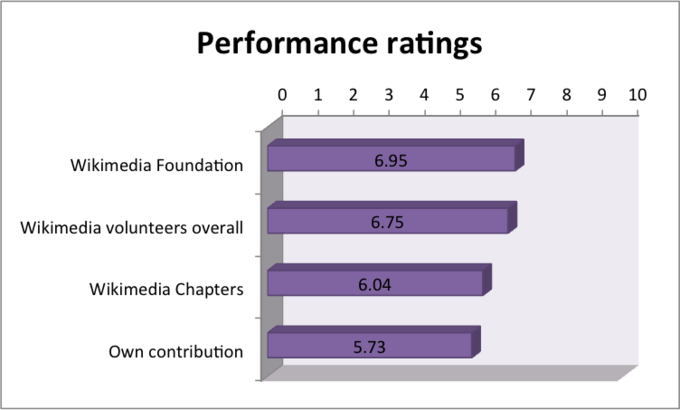With a few exceptions, the majority of the data used in ratio analysis comes from evaluation of the financial statements.
Learning Objectives
Differentiate between recurring and non-recurring items in financial reports.
With a few exceptions, the majority of the data used in ratio analysis comes from evaluation of the financial statements.
Differentiate between recurring and non-recurring items in financial reports.
Ratio analysis is a tool for evaluating financial statements but also relies on the numbers in the reported financial statements being put into order to be used as ratios for comparison over time or across companies. Financial statements are used as a way to discover the financial position and financial results of a business. With a few exceptions, such as ratios involving stock price, the majority of the data used in ratio analysis comes from the financial statements. Ratios put this financial statement information in context.

Prior to the calculation of financial ratios, reported financial statements are often reformulated and adjusted by analysts to make the financial ratios more meaningful as comparisons across time or across companies. In terms of reformulation, one common reformulation is to divide reported items into recurring or normal items and non-recurring or special items. In this way, earnings could be separated into normal or core earnings and transitory earnings with the idea that normal earnings are more permanent and hence more relevant for prediction and valuation. In terms of adjustment of financial statements, analysts may adjust earnings numbers up or down when they suspect the reported data is inaccurate due to issues like earnings management.
The evaluation of a company’s financial statement analysis is a form of fundamental analysis that is bottoms up. While analysis of a company’s prospects can include a number of factors, including understanding the economic situation or the industry or sentiment about the company or its products, ratio analysis of a company relies on the specific company financials.
While ratio analysis can be quite helpful in comparing companies within an industry, cross-industry comparisons should be done with caution.
Describe how valuation methodologies are used to compare different companies in different sectors.
One of the advantages of ratio analysis is that it allows comparison across companies, an activity which is often called benchmarking. However, while ratios can be quite helpful in comparing companies within an industry and even across some similar industries, comparing ratios of companies across different industries may not be helpful and should be done with caution.

An industry represents a classification of companies by economic activity. At a very broad level, industry is sometimes classified into three sectors: primary or extractive, secondary or manufacturing, and tertiary or services. At a very detailed level are classification systems like the ISIC (International Standard Industrial Classification).
However, in terms of ratio analysis and comparing companies, it is most helpful to consider whether the companies being compared are comparable in the financial metrics being evaluated in the ratios. Different businesses will have different ratios for different reasons. A peer group is a set of companies or assets which are selected as being sufficiently comparable to the company or assets being valued (usually by virtue of being in the same industry or by having similar characteristics in terms of earnings growth and return on investment). From the investor perspective, peers can include companies that are not only direct product competitors but are subject to similar cycles, suppliers, and other external factors.
Valuation using multiples involves estimating the value of an asset by comparing it to the values assessed by the market for similar or comparable assets in the peer group. A valuation multiple is simply an expression of market value of an asset relative to a key statistic that is assumed to relate to that value. To be useful, that statistic – whether earnings, cash flow, or some other measure – must bear a logical relationship to the market value observed; to be seen, in fact, as the driver of that market value. The price to earnings ratio, for example, is a common multiple but can differ across companies that have different capital structures; this could make it difficult to compare this particular ratio across industries.
Additionally, there could be problems with the valuation of an entire industry, making ratio analysis of a company relative to an industry less useful. The use of multiples only reveals patterns in relative values, not absolute values such as those obtained from discounted cash flow valuations. If the peer group as a whole is incorrectly valued (such as may happen during a stock market “bubble”), then the resulting multiples will also be misvalued.
Comparing the financial ratios of a company to those of the top performer in its class is a type of benchmarking.
Describe how benchmarking can be used to assess the strength of a company.
Key Takeaways
Financial ratios allow for comparisons and, therefore, are intertwined with the process of benchmarking, comparing one’s business to that of others or of the same company at a different point in time. In many cases, benchmarking involves comparisons of one company to the best companies in a comparable peer group or the average in that peer group or industry. In the process of benchmarking, an analyst or manager identifies the best firms in their industry, or in another industry where similar processes exist, and compares the results and processes of those studied to one’s own results and processes on a specific indicator or series of indicators.

Benchmarking can be done in many ways, and ratio analysis is only one of these. One benefit of ratio analysis as a component of benchmarking is that many financial ratios are well-established calculations derived from verified data. In benchmarking as a whole, benchmarking can be done on a variety of processes, meaning that definitions may change over time within the same organization due to changes in leadership and priorities. The most useful comparisons can be made when metrics definitions are common and consistent between compared units and over time.
Benchmarking using ratio analysis can be useful to various audiences. From an investor perspective, benchmarking can involve comparing a company to peer companies that can be considered alternative investment opportunities from the perspective of an investor. In this process, the investor may compare the focus company to others in the peer group (leaders, averages) on certain financial ratios relevant to those companies and the investor’s investment style. From a management perspective, benchmarking using ratio analysis may be a way for a manager to compare their company to peers using externally recognizable, quantitative data.
Trend analysis consists of using ratios to compare company performance on an indicator over time, often to forecast or inform future events.
Analyze the benefits and challenges of using trend analysis to evaluate a company.
In addition to using financial ratio analysis to compare one company with others in its peer group, ratio analysis is often used to compare the company’s performance on certain measures over time. Trend analysis is the practice of collecting information and attempting to spot a pattern, or trend, in the information. This often involves comparing the same metric historically, either by examining it in tables or charts. Often this trend analysis is used to forecast or inform decisions around future events, but it can be used to estimate uncertain events in the past.

Trend analysis can be performed in different ways in finance. For example, in technical analysis the direction of prices of a particular company’s public stock is calculated through the study of past market data, primarily price, and volume. Fundamental analysis, on the other hand, relies not on sentiment measures (like technical analysis) but on financial statement analysis, often in the form of ratio analysis. Creditors and company managers also use ratio analysis as a form of trend analysis. For example, they may examine trends in liquidity or profitability over time.
Trend analysis using financial ratios can be complicated by the fact that companies and accounting can change over time. For example, a company may change its business model so that it begins to operate in a new industry or it may change the end of its financial year or the way it accounts for inventories. When examining historical trends in ratios, analysts will often make adjustments to the ratios for these reasons, perhaps performing some ratio analysis in which they segment out business segments that are not consistent over time or they separate recurring from non-recurring items.
Financial statement analyses can yield a limited view of a company because of accounting, market, and management related limitations of such analyses.
Describe the limitations associated with using ratio analysis.
Ratio analysis using financial statements includes accounting, stock market, and management related limitations. These limits leave analysts with remaining questions about the company.
First of all, ratio analysis is hampered by potential limitations with accounting and the data in the financial statements themselves. This can include errors as well as accounting mismanagement, which involves distorting the raw data used to derive financial ratios. While accounting measures may have more external standards and oversights than many other ways of benchmarking companies, this is still a limit.
Ratio analysis using financial statements as a tool for performing stock valuation can be limited as well. The efficient-market hypothesis (EMH), for example, asserts that financial markets are “informationally efficient. ” In consequence of this, one cannot consistently achieve returns in excess of average market returns on a risk-adjusted basis, given the information available at the time the investment is made. While the weak form of this hypothesis argues that there can be a long run benefit to information derived from fundamental analysis, stronger forms argue that fundamental analysis like ratio analysis will not allow for greater financial returns.
In another view on stock markets, technical analysts argue that sentiment is as much if not more of a driver of stock prices than is the fundamental data on a company like its financials. Behavioral economists attribute the imperfections in financial markets to a combination of cognitive biases such as overconfidence, overreaction, representative bias, information bias, and various other predictable human errors in reasoning and information processing. These audiences also see limits to ratio analysis as a predictor of stock market returns.
At the management and investor level, ratio analysis using financial statements can also leave out a number of important aspects of a firm’s success, such as key intangibles, like brand, relationships, skills, and culture. These are primary drivers of success over the longer term even though they are absent from conventional financial statements.
Other disadvantages of this type of analysis is that if used alone it can present an overly simplistic view of the company by distilling a great deal of information into a single number or series of numbers. Also, changes in the information underlying ratios can hamper comparisons across time and inconsistencies within and across the industry can also complicate comparisons.